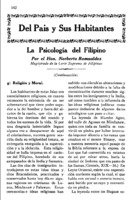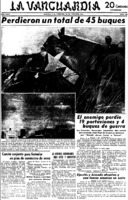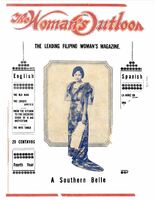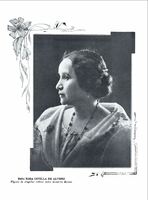Ficha
Mabini: architect of the Philippine revolution
In line with the recuperation of revolutionary figures in the 60’s, Panorama published an article by Cesar Adib Majul where he outlined the principal thesis of his book on Mabini (1960), the standard biography of Apolinario Mabini, Emilio Aguinaldo’s closest adviser, “Brain’s of the revolution” and Prime Minister of the Republic of Malolos. Mabini was an uncomfortable figure during the American period, and he was deported to Guam and only swore an oath of allegiance shortly before dying of cholera in 1903. Majul argued that, for Mabini, the Philippine Revolution was a continuation of the American and the French Revolutions, and therefore part of the same universal history of progress. The Revolution was for Manini evidence of the people’s enlightenment, the exercise of reason that showed that Filipinos were civilized, defending their “natural right” to be free. Although Mabini understood revolution as natural and necessary, his democratic temper might have led him to consider the revolution against the U.S. unjustified when this wasn't the desire of the majority, defending instead a peaceful concession of rights which would end up with full independence. Mabini, as Majul put it, was a product of European rationalism and nineteenth century liberalism.- Fecha
- 1962-05
- Fuente
- “Mabini architect of the Philippine revolution”, Panorama, Vol. XIV, No.5, May 1962, pp. 83-90. In Open Access Repository @ UPD.
- Relación
-
Majul, Cesar Adib. 1960. Mabini and the Philippine Revolution. Quezon City: University of the Philippines
Ocampo Ambeth R. 1995. Mabini's Ghost. Pasig City: Anvil.
Rafael, V. L. 2013. “The afterlife of empire: sovereignty and revolution in the Philippines”. Cuaderno Internacional de Estudios Humanísticos y Literatura (CIEHL), (19): 99-109. - Autoría
- Cesar Adib Majul
- Editor
- Item held at University of the Philippines Diliman and University of Antwerp VLIRUOS Rare Periodicals Open Access Repository
- Colaborador
- Emilio Vivó Capdevila
- Idioma
- English

Conjuntos de fichas
Medios
1 de 1





